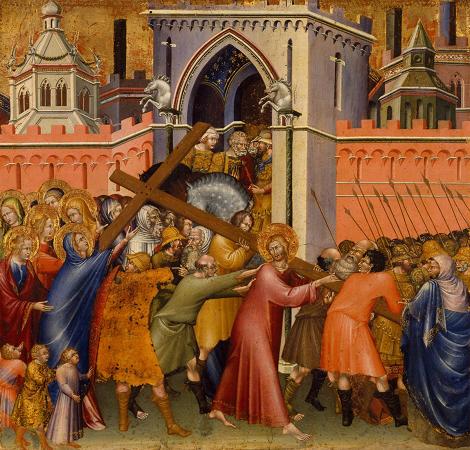Walters Art Museum. Art museum in Maryland, U.S. The Walters Art Museum, located in Mount Vernon-Belvedere, Baltimore, Maryland, United States, is a public art museum founded and opened in 1934. It holds collections established during the mid-19th century. The Museum's collection was amassed substantially by major American art and sculpture collectors, a father and son: William Thompson Walters, who began serious collecting when he moved to Paris as a nominal Southern/ Confederate sympathizer at the outbreak of the American Civil War in 1861; and Henry Walters, who refined the collection and made arrangements for the construction of a later landmark building to rehouse it. After allowing the Baltimore public to occasionally view his father's and his growing added collections at his West Mount Vernon Place townhouse/mansion during the late 1800s, he arranged for an elaborate stone palazzo-styled structure built for that purpose in 1905-1909. Located across the back alley, a block south of the Walters mansion on West Monument Street/Mount Vernon Place, on the northwest corner of North Charles Street at West Centre Street. The mansion and gallery were also just south and west of the landmark Washington Monument in the Mount Vernon-Belvedere neighborhood, just north of the downtown business district and northeast of Cathedral Hill. Upon his 1931 death, Henry Walters bequeathed the entire collection of then more than 22,000 works, the original Charles Street Gallery building, and his adjacent townhouse/mansion just across the alley to the north on West Mount Vernon Place to the City of Baltimore, for the benefit of the public. The collection includes masterworks of ancient Egypt, Greek sculpture and Roman sarcophagi, medieval ivories, illuminated manuscripts, Renaissance bronzes, Old Master European and 19th-century paintings, Chinese ceramics and bronzes, Art Deco jewelry, and ancient Near East, Mesopotamian, or ancient Middle East items. In 2000, The Walters Art Gallery changed its long-time name to The Walters Art Museum to reflect its image as a large public institution and eliminate confusion among some of the increasing out-of-state visitors. The following year, The Walters reopened its original main building after a dramatic three-year physical renovation and replacement of internal utilities and infrastructure. The Archimedes Palimpsest was on loan to the Walters Art Museum from a private collector for conservation and spectral imaging studies. Starting on October 1, 2006, the museum was enabled to make admission free to all, year-round, as a result of substantial grants given by Baltimore City and the surrounding suburban Baltimore County arts agencies and authorities. In 2012, The Walters released nearly 20,000 of its own images of its collections on a Creative Commons license, and collaborated in their upload to the world-wide web and the internet on Wikimedia Commons. This was one of the largest and most comprehensive such releases made by any museum. The Walters' collection of ancient art includes examples from Egypt, Nubia, Greece, Rome, Etruria and the Near East. Highlights include two monumental 3,000-pound statues of the Egyptian lion-headed fire goddess Sekhmet; the Walters Mummy; alabaster reliefs from the palace of Ashurnasirpal II; Greek gold jewelry, including the Greek bracelets from Olbia on the shores of the Black Sea; the Praxitelean Satyr; a large assemblage of Roman portrait heads; a Roman bronze banquet couch, and marble sarcophagi from the tombs of the prominent Licinian and Calpurnian families. In 1911, Henry Walters purchased almost 100 gold artifacts from the Chiriqui region of western Panama in Central America, creating a core collection of ancient American native art. Through subsequent gifts of art and loans, the museum has added works, mostly in pottery and stone, from Mexico, Central America and South America, including pieces from the Mesoamerican Olmec, Aztec, and Maya cultures, as well as the Moche and Inca peoples of South America. Highlights of the Asian art collection assembled earlier by Baltimorean father and son collectors William T. and Henry Walters include Japanese arms and armor, and Chinese and Japanese porcelains, lacquers, and metalwork. Among the museum's outstanding works of Asian art is a late-12th-or early-13th-century Cambodian bronze of the eight-armed Avalokiteshvara, a T'ang Dynasty earthenware camel, and an intricately painted Ming Dynasty wine jar.
more...














